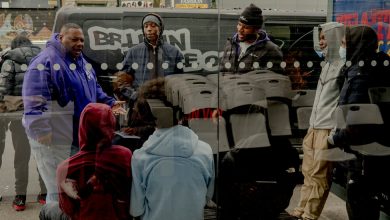A Peek Inside Canada’s Most Complex Heritage Restoration Job

On Canada Day, about 100,000 people, including Prime Minister Justin Trudeau, made their way to a concert stage in front of the Canadian War Museum for a day of musical performance, occasional speeches and, finally, fireworks.

A large excavation in front of Canada’s Parliament will create a new underground visitors’ entrance.Credit…Ian Austen/The New York Times
For the second year in a row, the celebration wasn’t held on Parliament Hill. It won’t take place there, against the traditional Gothic revival backdrop of the Parliament Buildings, for many years to come.
The main Centre Block, the home of both the Senate and House of Commons chambers, is in the midst of a more than 10-year construction project that will restore decades of deterioration, drastically reduce its carbon footprint and bring it up to current fire and earthquake survival standards. The project will also update the building’s electrical, plumbing, heating and communications systems, some of which haven’t changed since it opened in 1927.
It is budgeted at upward of 5 billion Canadian dollars, of which about 600 million dollars have been spent. But the project has avoided the political acrimony that has bedeviled another historic Canadian government building: 24 Sussex Drive, the currently abandoned official residence for the prime minister. No recent prime ministers have wanted to commit to spending the tens of millions of dollars it would take to make the stone house habitable again, fearing a political backlash from looking as if they were spending money on themselves.
Both the House of Commons and the Senate turned out the lights and moved their chambers and committee rooms to temporary locations in 2019. Rob Wright is the assistant deputy minister at the Department of Public Works and Government Services and in charge of Canada’s renovation project. He told me that despite the pandemic, a public service strike and a construction workers’ strike, he’s confident that the work will be finished as planned by 2031 and within budget. Earlier this year, the federal auditor general largely concurred.
Two factors have made the rehabilitation unusually complex. The first was the decision that all of the heritage elements of the building, like the House and Senate chambers, the prime minister’s office and the Hall of Honour, should look exactly as they originally were, only cleaner and without later add-ons like broadcasting cables. The other factor complicating the rehabilitation, which was mentioned by the auditor general but not Mr. Wright, was Parliamentarians’ dithering over what they wanted, thus delaying some key design and engineering decisions.
This week, I put on safety glasses, a hard hat, a high-visibility vest and steel-toed boots to join a tour of the Centre Block construction site, led by Mr. Wright. The project is just winding up its first phase. This largely involved protecting or removing items for restoration, including artwork, woodwork and carvings. Both chambers are now stripped back to brick and terra-cotta tiles, filled with scaffolding to their ceilings and almost unrecognizable. The painted linen ceiling of the House of Commons has been rolled up and taken away to textile and paint restorers. As is typical during renovations of buildings from 100 years ago, a lot of asbestos was removed, more than 22.5 million pounds.
While familiar places within the building should remain visibly unchanged when it reopens, the first sight I saw after passing through the high gray wall around the work site provided a vivid illustration of how the Centre Block will nevertheless be a very different place, particularly for visitors. A massive pit is now where the Canada Day performance stage was placed in years past.
The void left by the 40,000 truckloads of limestone that were removed is the beginning of a new visitors’ center that will take tourists underneath and then up into the building and will expand the security check-in from a cramped single line into a seven- or eight-lane operation. Along with other new measures, the center will allow the Library of Parliament, which runs the building tours, to double its capacity to 700,000 visitors a year.
The new underground section will include some Senate committee rooms, a cafeteria and rooms where members of Parliament will meet with the public, an important feature given that only 50 of the 338 of them will have offices in the Centre Block when it reopens. When Australia placed some of its lawmakers underground, security concerns led officials to fence off some of the lawns of its Parliament House. Mr. Wright, however, said that Ottawa’s new underground complex was designed in a way that would not restrict public access to the Great Lawn or reduce its size.
Work is underway virtually everywhere. Stone masons now have digital maps of all of the building’s 365,000 stones. About a third of them are being replaced or repaired, while the rest are being cleaned with a process that uses laser light to cause decades of grime to fall off without affecting the stones themselves. Sculptors are repairing or replacing sculptures inside and outside the building, a process that often involves historical detective work.
The most intensive activity at the moment is something that will be invisible when finished. In order to minimize earthquake damage, workers are creating a series of temporary concrete piles to support the building and the Peace Tower. They will allow the construction of 500 piles that will extend 23 meters below the new underground complex into rock. Between each of those piles and the building will be two-foot-thick slabs of rubber that engineers told us will cushion most seismic activity. That part of the project alone is expected to cost 300 million Canadian dollars.
After the tour, Mr. Wright suggested that the project could have done without the labor strikes and pandemic disruptions.
“We have had a number of shocks,” he said. “But the team has worked hard at finding a number of approaches that have been key to keeping things on track.”
Trans Canada
-
Lydia DePillis, who covers economics for The Times, found that the economic toll of Canada’s record wildfire season “is only beginning to sink in.”
-
Reporting from Saint John’s, Newfoundland and Labrador, I was one of several correspondents who contributed to a detailed examination of the final, fatal trip to the wreckage of Titanic by the Titan submersible, written by John Branch and Christina Goldbaum.
-
In Canada, David Gilmour joined Peter Munk to found Clairtone, the innovative consumer electronics company, and Barrick Gold, which became one of the world’s largest gold miners. But he was most widely known for bottling water in Fiji and sending it around the globe in distinctive square bottles. Mr. Gilmour died at the age of 91.
-
A judge in Saskatchewan has ruled that the “new reality in Canadian society” is that the use of the seemingly trite thumbs-up emoji can have significant consequences.
-
The need to secure supplies of lithium for electric vehicle batteries is pushing some automakers to invest in mining, including some projects in Canada, Clifford Krauss and Jack Ewing report.
-
Matthew Futterman looks at the reversal in Canada’s once bright tennis prospects.
-
Sue Johanson, a Canadian sex educator who became a media star in midlife, died at 92.
-
Beyoncé is starting her much-anticipated North American tour in Toronto on Saturday.
A native of Windsor, Ontario, Ian Austen was educated in Toronto, lives in Ottawa and has reported about Canada for The New York Times for the past 16 years. Follow him on Twitter at @ianrausten.
How are we doing?
We’re eager to have your thoughts about this newsletter and events in Canada in general. Please send them to [email protected].
Like this email?
Forward it to your friends, and let them know they can sign up here.





